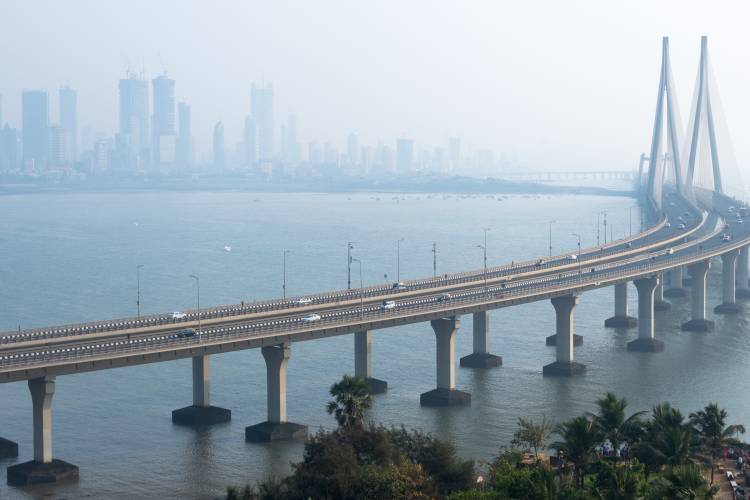India’s growth story: The IMF’s recent Article IV report on India raises crucial questions about the sustainability of its currency and debt levels, casting a critical eye on the Reserve Bank of India’s interventions and future debt trajectory, even as it acknowledges the country’s impressive economic growth. This analysis sparks a necessary debate about India’s economic stability and future course.
While the RBI counters the IMF’s concerns, emphasising transparency and market-driven rates in its interventions, it also views the assessment as short-term, focused on recent months’ volatility. The IMF, however, worries about foreign exchange interventions impacting the rupee-dollar rate, while the RBI asserts their necessity to control volatility.
READ | India revs up trade engine with FTAs, monitoring, and quality standards
A more pressing concern raised by the IMF is India’s potential debt-to-GDP ratio exceeding 100% by 2028, particularly amidst climate change risks. This suggests the need for diversifying financing sources, attracting private sector investments, and exploring carbon pricing mechanisms. While Indian authorities dismiss these projections as extreme scenarios, citing past stability amidst various shocks, the debt level remains above the prescribed 60% (40% central, 20% state).
India’s debt profile stands out for its rupee and long-term composition, contrasting with the global trend of soaring public debt, which quadrupled while GDP tripled from 2000 to 2022. This rapid rise in developing countries, driven by development needs, living crises, and climate change, saw indebted nations jump from 22 in 2011 to 59 in 2022.
India’s impressive growth often overshadows the delicate dance it performs with its debt. Managing debt responsibly strengthens macroeconomic stability, but it must also serve as a tool for social progress. Earmarking resources for education and healthcare ensures a healthy and educated workforce, the bedrock of future prosperity. Similarly, ambitious climate change commitments necessitate careful fiscal planning. Responsible debt management can free resources for clean energy initiatives and climate-resilient infrastructure, propelling India towards a sustainable future. By forging an alliance between financial prudence and social-environmental goals, India can transform its debt from a burden into a catalyst for inclusive and sustainable growth.
However, the IMF’s observations serve as serious warnings. Despite India’s growth, its sovereign investment rating remains at the lowest level (‘BBB- Stable Outlook’) since 2006, due to low per capita income, weak fiscal performance, and cumbersome debt processes. The anticipated increase in capital expenditure, especially on infrastructure, coupled with high GDP growth and tax buoyancy, raises the possibility of fiscal slippage in 2024-25 due to higher subsidies and election-related expenditures. Therefore, India needs to exercise prudence in managing its public debt program, prioritising judicious investments and returns.
Furthermore, minimising RBI’s foreign exchange market intervention, except during periods of high volatility, is advisable. India’s current external sector, with substantial foreign exchange reserves, leading foreign remittance inflows, and resilient foreign investment flows, appears strong. Moreover, the Current Account Deficit has seen a favourabledecline. While the IMF’s comparison of India’s currency depreciation with other developing countries may be unwarranted, its call for prudent public debt management and effective fiscal sustainability measures are welcome. In the current scenario, India reaching 100% debt-to-GDP is seen as a remote possibility.
However, the IMF report subtly underlines the need for a robust private sector engine. Infrastructure, the backbone of a thriving economy, requires not just government muscle, but also the agility and innovation of private players. Incentives like public-private partnerships, targeted tax breaks, and streamlined regulations can unlock a wave of private capital, easing the burden on public finances and accelerating crucial infrastructure projects. By fostering a vibrant private sector ecosystem, India can not only bridge the infrastructure gap but also fuel the next wave of economic dynamism.
India’s economic future hinges on striking a delicate balance between capitalising on its growth momentum and addressing the concerns highlighted by the IMF. Prudent public debt management, transparent forex interventions, and robust fiscal measures are key to building a more resilient economy. While dismissing the IMF’s projections as worst-case scenarios may offer temporary comfort, India must not ignore the valuable warnings embedded within this critical report. Recognising its vulnerabilities and adopting proactive solutions will pave the way for India to not only sustain its growth but also achieve true economic prowess on the global stage.

